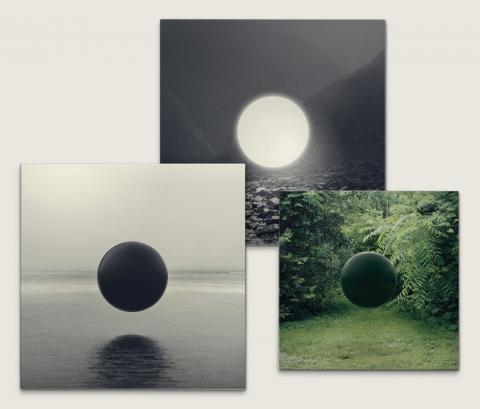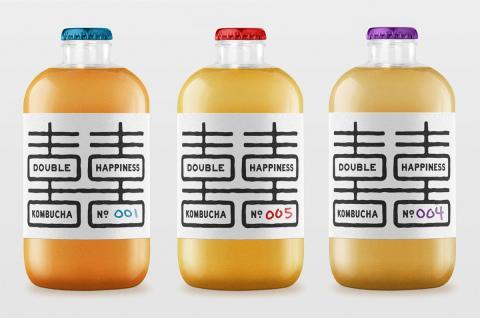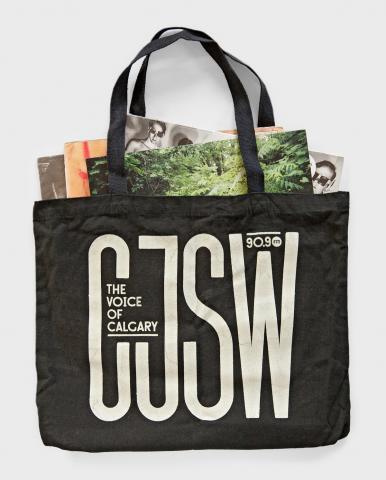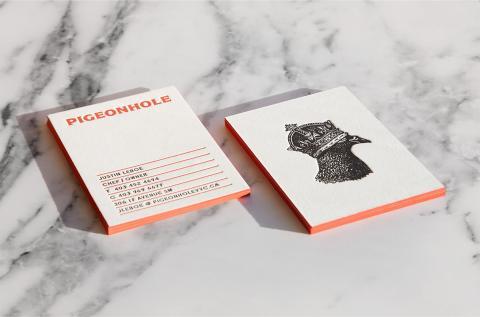BACHELOR OF DESIGN IN PHOTOGRAPHY, 2008
ALUMNI DISCOVERY INITIATIVE, INTERVIEW BY JENNIE ALVES, 2015
WITH UPDATES FROM MAY 2019
Jennie ALVES: How could you imagine ACAD supporting its alumni?
Marc RIMMER: I feel like Design students are fairly well prepared for the industry by the time they graduate. We’ve had interactions with working designers and photographers, and have built a fairly good network.
ALVES: What can you remember of the community atmosphere of ACAD?
RIMMER: It was great. The friends that I made at ACAD are still very good friends of mine today, and are collaborators that I work with often. I think the most important part about ACAD is not so much the teachers and the technical skills you leave with, but the network of your peers and the exchange of knowledge. It’s being able to experiment and most importantly, mess up. It gives you a place to screw up without consequences.
I don’t know it if it’s still like this at ACAD, but there was very much a clear distinction between the fine arts side of the school and the design side of the school when I was there. In terms of what ACAD could’ve done while we were there, I would say supporting more collaboration between the two schools is important, as that was pretty non-existent while we were there.

Branding for Ricardo's Hideaway
ALVES: What can you remember of your experience with instructors at ACAD?
RIMMER: There were a few instructors I had really close relationships with and still do. My favorites were the challenging ones that didn’t give out good grades very often. I finally got an A on the very last project I did for one of them and it was the most satisfying feeling.
I actually went to ACAD to do graphic design and then I fell in love with photography. The first year I was at ACAD, photography became a design major, so I changed my mind last minute and ended up doing photography instead, although my course load was very design-heavy, about a third design classes. My photography instructors were so supportive and I became really close with some of them; even working with a few on projects outside of school. By the end of fourth year my love of photography had faded, though, and a big reason I didn’t focus on design sooner was these relationships and feeling like I’d be letting some of my teachers down. I was so obsessed with doing right by them that I continued with photography for a couple years. I ended up moving to Montreal after ACAD, and it took the distance and getting away to realise that I should do what I want to do, so I started focusing on design. Montreal is super cheap, so the low overhead allowed me to play around, take risks and find clients.
I’ve now been doing design full time since 2010. I don’t miss photography much but I still do it for certain projects, like the Braids album artwork. When I was working in photography, I was shooting mainly headshots of CEOs and I hated it. A big reason why I love doing design work is because I love the process of coming up with the ideas and executing them. In the commercial photography world I find you’re often just executing someone else’s ideas, at least the work that pays.

Album artwork for Flourish/Perish by Braids
Coming back and knowing what I wanted for myself — rather than pleasing teachers and other people — was good. I moved back to Calgary in early 2013, and it had changed a lot in those 4 years. I don’t know how much of it was the city and how much of it was me, but it was a far better fit and way more in line with my goals and priorities. I’m a champion of Calgary now, and a lot of that comes from leaving and maturing and changing. It put some things in perspective.
I am running a small design shop now, and it’s been great. Calgary is dominated by large agencies, mainly advertising agencies, and in those situations a lot of the money is going into just running the shop. You hire them to do a campaign and there’s going to be huge overhead. A lot of people nowadays, especially with the economy in a weird state, are going to smaller shops because they’re cheaper and you’re interacting directly with the person who is doing your design work.
It’s unfortunate, but there aren’t very many freelancers or small shops in Calgary because the rent is expensive, there isn’t a lot of great studio space, and it’s tough, that job insecurity. Some people will leave their jobs at larger firms to freelance, and they’ll maybe last a month or two and just get totally overwhelmed by the overhead. Photography is a one-person show, and that set me up to be comfortable with the ups and downs of freelancing. I credit it for helping me talk about money and the business side of things.
I think the best thing that could happen for all freelancers and small shops in Calgary is for there to be more of them. We’re competition to each other in some ways, but the exchange of information is essential. It’s so important to be able to communicate with your peers, things like, “Hey, I really messed up on this job for this reason, don’t do it, don’t make this mistake that I made.” Really, the only way to learn when you’re not at a large firm surrounded by others, is to mess up and share that with other freelancers.

Double Happiness Kombucha
ALVES: How do you tend to find your clients, or how did you now that you’re more established?
RIMMER: I’m fortunate, I’ve never had to do intense promo. I do mainly identity work so it would be hard for me to go after a business that I don’t even know exists yet. Most of my clients are first-time restaurants or new businesses. Lots of larger restaurants will go to agencies just because they feel more comfortable with them and have the budget, whereas a lot of first-time business owners don’t have the money for that, so they work with smaller designers like myself.
I usually get clients through restaurant owners telling their friends, who are other restaurant or café owners. I did a coffee shop for a friend in Winnipeg six or seven years ago, and he told another coffee person, and then before I knew it I was the coffee shop guy. I didn’t even drink coffee until I did the design for my friend.
ALVES: Is there a piece of advice that you held on to from ACAD?
RIMMER: The biggest things are being on time and having a good work ethic. They just beat it into you so hard in the design program, I don’t know if it’s still the same now as it was then, but for us it was, “If you’re one minute late for class you get a zero on this assignment that you just spent 36 hours on!” It was hard. I wouldn’t sleep the night before a project was due. My project would be done, but I was so afraid of my alarm not going off that I would wake up every fifteen minutes. In the industry there’s no such thing as an extension. Make realistic timelines for things and stick to them. By the time I graduated I was so used to working with strict timelines that it was a seamless transition to the way things are in the real world.
ALVES: How did you come to feel graphic design was right for you?
RIMMER: I was dabbling in all sorts of stuff in junior high and high school, and then a teacher told me there was a thing called graphic design, that it was something I could do as a profession. I had no idea what I wanted to do with my life, but I put together a portfolio of stuff that was predominantly Nine Inch Nails lyrics on top of photos [laughs]. And terrible paintings. I’ve never been good at brush work or painting; my drawing skills are terrible.
And then somehow, I got into graphic design. I played in bands, so I would put together show posters. I think a lot of graphic designers I know got their start in posters. There was a point where I thought I was going to do posters for the rest of my life. I was like, “Man, this is great, I can do a show poster for Broken City and get paid fifty bucks for it! I’m rich!”, then you spend six hours on it and you’re essentially making 8 dollars an hour.
ALVES: Do you see a difference between the fine arts and design?
RIMMER: At the end of the day I see myself as a tradesperson, not much different than a plumber. I provide a service for people. I solve what my client has defined as the problem, not what I have defined as the problem.
I know a lot of fine artists find their inspiration out in the world or internally and are reinterpreting what they see, whereas I am going to meetings with people and I’m given someone else’s problem to solve. I love that, I actually hated open ended assignments when I was at ACAD. For me, the more limitations the better, usually.

Album artwork for Preoccupations' self-titled 2016 album
I never wanted to do fine art but, for example, Daniel [my studiomate at Blank Page studio] does a lot of city murals that are usually responses to a proposal, and he’s given set limitations to complete them. At that point, does that make him a designer? Or, if I were to do a typography project that’s for me and not someone else, a totally self-defined problem, at that point do I become an artist?
You can have training as a graphic designer and not end up being a designer., instead using graphic design as an artistic medium. I see illustrators as designers who draw; a commercial outlet for drawing. The more time I spend doing what I do and the more time I spend around other artists, I feel more comfortable answering that question, but I’m still not sure.
ALVES: When starting a project, what are the types of motions you go through to bring a piece from research to something you’d want to show an audience?
RIMMER: It always starts with meetings. I am also coming up with some sort of written mission statement on what success looks like for each project. This is important because you need to know when you’ve arrived at your goal. It also helps keep the project on course. The rest is not that different than completing a project at ACAD. Lots of research, on the client and their competitors, their name, their demographic, all kinds of things like that. I then do a lot of sketching, trying to spend as much time as possible with a pen and paper before I go to computer. Once you go to computer you can fall in love with things too easily, including really bad ideas just because they’re polished.
Then you pitch it and they hopefully pick an idea, and if there’s disagreement it’s important to take what you’ve come up with and compare it to the original mission statement. For example, Harley Davidson’s mission statement and brand essence was “freedom.” Everything they do, at the end of the day, should come back to that. Does it show freedom? You are always making sure that everything you’re doing is on brand.
ALVES: Coffee branding and Album artwork features regularly in your portfolio. How much does your personal interest play in and get to influence the work you do and except from people?
RIMMER: It’s interesting because I did those first few coffee shops when I didn’t really have any interest in coffee or food, but at the time I just started saying yes to all the work that was coming my way. “Everything” just happened to be coffee and restaurants and album art because that was my community. I eventually became really interested in those subjects, and I became confident in dealing with that kind of clientele. After some time I am now able to say no to things, and am better able to pick the projects I want to work on and that I believe in.
ALVES: What’ve been some of your most satisfying projects to date?
RIMMER: I did a small tote bag for CJSW. Seeing people carrying it around with tons of wear on it — seeing my design super beaten up and falling apart — was pretty satisfying. The most satisfying projects are with the people you really admire. I recently worked on Pigeonhole next to Model Milk on 17th ave. They are amazing chefs, but also hard-asses. They were very particular in what they wanted but at the end of the day pleasing them was really satisfying. There was a few rounds of back and forth and they pushed me further than I thought I could go at the time, but when they approved my ideas it was extra rewarding because I just loved what they were doing. I also did a typeface design for a local gelato company. I love type. That was one of the first typefaces I designed and to see someone else actually use it is amazing.

Pigeonhole restaurant sign
ALVES: What does a normal workday for you look like? (Wake up, get into the office, emails, meals, meetings, art, a walk?)
RIMMER: I usually get up around 7:30 and answer a few quick emails and then I’ll put my computer away and drink coffee and read the news. I found that I was waking up and my phone was next to my bed, and I’d immediately put my phone in front of my face and that was the start of my day. I would literally spend my whole day on the phone and computer and it was getting unhealthy.
Now, I read and drink coffee till 9ish and then I bike to my studio. It’s about a 15 minute ride and I find it’s a good way to separate work and home; just to clear my mind. Exercise is good.
I usually try to keep a 10am – 6pm studio day. I try to do tasks that require the most creative brain capacity first, offline, with email and other digital distractions turned off. I found that its really easy to do reactive work… just responding to people’s requests as they come up, rather than actually focusing on what’s most important.
To avoid this, each day I set out what’s most important, work until lunch time, and then get back online and check emails. If there’s anything that’s urgent and pressing, I’ll respond to it or design something and get it out, but I usually try to turn off the internet in the afternoon, too. I find meetings are best to book in the afternoon, because sometimes a morning meeting can totally throw your whole day off.
Before I got in the habit of setting specific work times, I found I was working at 30% capacity. I would get up and work morning until night, but I was never being very efficient because I knew I could just work whenever. For me, it’s good to have set routines and stick to them. Even when I’m not super busy, I still come in here, 10 to 6. It’s essential to keep the habit, because as soon as you break it, you’re in the weeds.

Tote bag design for CJSW 90.9 FM
ALVES: Tell me about your studio? How did you come to be in this building, Blank Page Studio? Describe the way you’ve set it up? Any interesting objects?
RIMMER: It’s kind of a crazy story how I found this place. I got it indirectly through one of my former classmates and friends at ACAD, Matthew Luckhurst. I was visiting him in San Francisco and he had just come back from Young Guns, an Art Directors Club award. He was like “Hey, there’s these two architects in Calgary doing really wild things, and I just met them in New York. You need to meet them!”
So I sent an email to these architects, Matt and Mark [of Studio North], and they invited me to come by for a drink. I came by their studio — here at Blank Page — and was super impressed there were people in the city doing creative work like theirs. It happened that one of the people who had helped build Blank Page was moving out, so I took his spot.
There’s a few prints in my studio from a few illustrator friends of mine. I’m starting to get a lot of colour in here now. I went to Iceland about a year ago; before Iceland I was your typical monochrome, black-and-grey kind of person. But in Iceland, there’s these little splashes of colour everywhere. A lot of people would wear all black and grey, but would wear crazy bright shoes. I was really inspired by that. Colour and plants keep a space lively.
ALVES: What would you say are the hallmarks of mid-western Canadian design? How does that differ from other parts of Canada?
RIMMER: I think we sometimes over-design things here. I find in Scandinavian countries, and Europe in general, the work is a lot more stripped down and simple. That said, there are a lot of people here doing amazing things, but locally we could benefit from weeding some stuff out.
Most of the good designers that come up in Calgary leave Calgary, but I think it’s getting better. It’s a better place to live and more people are staying or coming back. We need people to stick around. The design community in Calgary just needs to find itself, and it’s hard to do that when people keep leaving.
ALVES: What do you think are some of the most exciting things happening in the city design wise?
RIMMER: Every time I go into the Esker Gallery, I am really blown away that that space exists in this city. I’m pretty proud of that. There’s lots of great things that don’t have to do with design or art, also. Hopefully people see these things, are inspired, and decide they want to do it too. And bike paths. Bike paths are good.
ALVES: Given your experience, what advice would you give to a student when it comes to establishing a creative career?
RIMMER: Get comfortable talking about money, early. The one thing they don’t teach much of at ACAD is the business side of things. I think that’s just as important as being a strong creative. How many people do we all know who are super talented but going nowhere? Or people who are maybe not as talented but somehow seem to be swimming in work?
You need to get comfortable talking about money, about your work, the business side of things and responding to criticisms. If you’re working at an agency that’s one thing, but if you want to have your own shop or freelance, you have to get the business side down or it’s going to be the reason that you don’t succeed.

Pigeonhole business cards
ALVES: Would you suggest becoming a freelancer directly out of ACAD or do you think an agency is a better choice for new grads?
RIMMER: There are pros and cons to each. There’s way less commitment and it’s low-risk working at a firm or an agency. You’ll learn a lot from the people you’re working with, but you’ll also probably learn the business ins-and-outs more slowly than if you freelanced. It’s like a crash course when you’re working for yourself and running your own business. The first year you’re probably going to make a lot of mistakes. I’m good friends with people who work at agencies and they have a different skill set than I do, both in design and the business side of things. It’s tough to say, it’s comparing apples to oranges.
ALVES: If you were looking at a portfolio of an ACAD student, what are the kind of things you’d be looking for that you know from personal experience are assets?
RIMMER: It’s kind of intangible; I’d look for someone who “gets it.” Someone who doesn’t just mimic the styles around them. I’ll go to a portfolio show and open up a book that’s just ideas from Tumblr. I always look for someone who experiments and has an eye for things. Getting the technical side of things locked down is important, but it’s something you can learn. It’s a lot harder to learn having an “eye” for things.
